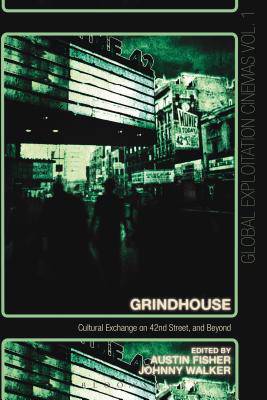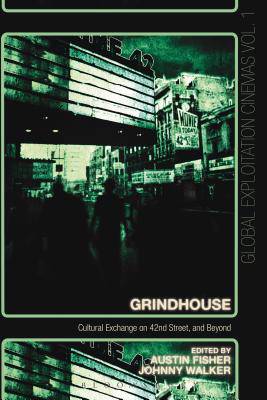
- Afhalen na 1 uur in een winkel met voorraad
- Gratis thuislevering in België vanaf € 30
- Ruim aanbod met 7 miljoen producten
- Afhalen na 1 uur in een winkel met voorraad
- Gratis thuislevering in België vanaf € 30
- Ruim aanbod met 7 miljoen producten
Zoeken
Grindhouse
Cultural Exchange on 42nd Street, and Beyond
€ 67,95
+ 135 punten
Omschrijving
The pervasive image of New York's 42nd Street as a hub of sensational thrills, vice and excess, is from where "grindhouse cinema," the focus of this volume, stemmed. It is, arguably, an image that has remained unchanged in the mind's eye of many exploitation film fans and academics alike. Whether in the pages of fanzines or scholarly works, it is often recounted how, should one have walked down this street between the 1960s and the 1980s, one would have undergone a kaleidoscopic encounter with an array of disparate "exploitation" films from all over the world that were being offered cheaply to urbanites by a swathe of vibrant movie theatres.
The contributors to Grindhouse: Cultural Exchange on 42nd Street, and Beyond consider "grindhouse cinema" from a variety of cultural and methodological positions. Some seek to deconstruct the etymology of "grindhouse" itself, add flesh to the bones of its cadaverous history, or examine the term's contemporary relevance in the context of both media production and consumerism. Others offer new inroads into hitherto unexamined examples of exploitation film history, presenting snapshots of cultural moments that many of us thought we already knew.
The contributors to Grindhouse: Cultural Exchange on 42nd Street, and Beyond consider "grindhouse cinema" from a variety of cultural and methodological positions. Some seek to deconstruct the etymology of "grindhouse" itself, add flesh to the bones of its cadaverous history, or examine the term's contemporary relevance in the context of both media production and consumerism. Others offer new inroads into hitherto unexamined examples of exploitation film history, presenting snapshots of cultural moments that many of us thought we already knew.
Specificaties
Betrokkenen
- Uitgeverij:
Inhoud
- Aantal bladzijden:
- 280
- Taal:
- Engels
- Reeks:
Eigenschappen
- Productcode (EAN):
- 9781628927498
- Verschijningsdatum:
- 22/09/2016
- Uitvoering:
- Paperback
- Formaat:
- Trade paperback (VS)
- Afmetingen:
- 152 mm x 226 mm
- Gewicht:
- 408 g

Alleen bij Standaard Boekhandel
+ 135 punten op je klantenkaart van Standaard Boekhandel
Beoordelingen
We publiceren alleen reviews die voldoen aan de voorwaarden voor reviews. Bekijk onze voorwaarden voor reviews.







